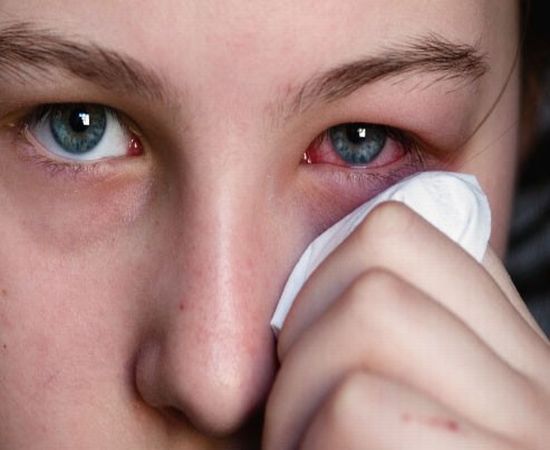Epidemic Keratoconjunctivitis (EKC) is a highly contagious infection of the front surface of the eye. It is the inflammation of the cornea or the conjunctiva of the eye mainly due to adenovirus. It is referred to as epidemic because it is a highly contagious disease.
It can also occur due to certain bacteria, allergen, or chemicals. The symptoms usually disappear in two weeks without any specific treatment. It is important to maintain hygienic conditions to prevent its infection to other people.
Symptoms of EKC
The following symptoms can be observed in people suffering from EKC:
1. Sudden redness of eye.
2. Onset of itching and irritation in eye.
3. Swelling of both eyes and eyelids.
4. Pain in the eye.
5. Watery discharge from eye.
6. Occasionally yellow fluid discharge from eye that can make the upper and lower eyelids stick together.
7. Photophobia or sensitivity to light may develop.
8. Blurred vision. It could be mild or severe with keratitis.
9. Some people may also suffer from fever, headache, and swollen lymph nodes in front of the ears.
Mode of Infection
EKC is a contagious infection and spreads easily among people. Most commonly people get infected by coming in contact with tear or discharge from an infected person. It can also spread through coming in contact with contaminated objects or surfaces. Research has shown that the infection also spreads through air droplets and swimming pool.
Prevention of EKC
The people suffering from EKC should follow certain preventive measures to avoid its infection:
1. Try to stay away from public or work places. If it is unavoidable follow the preventive measures.
2. Avoid touching your eyes frequently. If you touch it then immediately wash your hands.
3. Wash all items that you have used to touch your eyes.
4. Avoid sharing of towels, clothes, and bedding.
5. If you go to public places then wear goggles.
6. Cover your mouth and nose before sneezing or coughing.
7. Do not share your eye makeup items with other people.
8. Maintain proper hygiene and wash your hands frequently.
Diagnosis of EKC Infection
Symptoms described by the patient provide enough clues for the diagnosis of the EKC infection. Diagnosis is mostly carried out by using bimicroscopic slit lamp to examine the front parts of the eye. This usually helps the doctor to see the membrane that develops under the lower eyelid. A new test has been developed for an accurate diagnosis of adenovirus called RPS Adeno Detector. Swabs are collected from the tear or fluid of the patient’s eye. The detector than distinguishes the bacterial infection from viral one. It provides result within 10 minutes.
Treatment of EKC
There is no effective treatment for EKC. So the doctor usually focuses on treating the symptoms. The doctor usually prescribes cold compresses and artificial tear producing eye drops to treat dryness and irritation. Steroidal eye drops are recommended in certain cases. Medication to reduce pain or fever might be suggested by doctors. But any medication should be taken only after proper consultation with doctor.
Frequently Asked Questions
1. Are topical vasoconstrictors helpful in treating EKC?
They are usually not recommended by doctors as they are less helpful. The symptoms usually re-occur and can also cause local toxicity or hypersensitivity.
2. What are the complications as a result of EKC?
EKC can also lead to corneal ulceration, bacterial super-infections, keratitis, and chronic infection.




